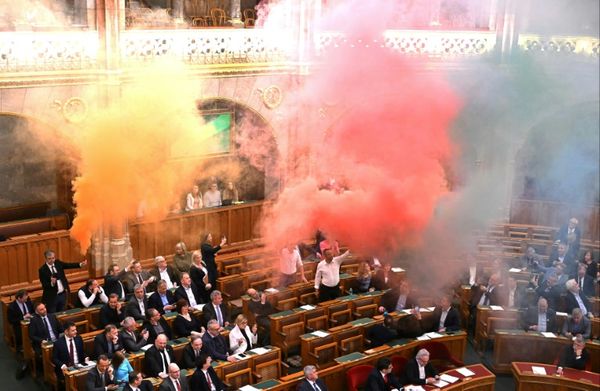
The countdown to Beyoncé’s next album, Act II, is officially on, marked by the superstar herself on Instagram. In a post that doubled as the album art drop, Beyoncé revealed an image of herself riding a white horse, holding an American flag, decked out in red, white and blue.
“This album has been over five years in the making,” wrote Beyoncé in the accompanying caption. “It was born out of an experience that I had years ago where I did not feel welcomed … and it was very clear that I wasn’t.” In 2016, the singer faced backlash from the mainstream country community after releasing a country song.
Act II’s album cover plays with country music’s iconography, from the horse to the boots, flag and 10-gallon hat. Francesca T Royster, an English professor at DePaul University and author of Black Country Music: Listening for Revolutions, believes these references are intended to provoke discussion.
“The aesthetic choice is bold and seems to be signaling the ways that Beyoncé is putting herself into conversations about nationalism, a theme very much central to discourses about country music, patriotism and authenticity, from the times of its origins,” Royster said.
In the caption, Beyoncé wrote: “My hope is that years from now, the mention of an artist’s race, as it relates to releasing genres of music, will be irrelevant.”
She said that after a “deeper dive into the history of country music” she “saw how music can unite so many people around the world, while also amplifying the voices of some of the people who have dedicated so much of their lives educating on our musical history”.
Diverse artists have influenced the genre from its inception, as the musician Rhiannon Giddens pointed out last month in the Guardian – enslaved people in the Caribbean invented string instruments that would become the basis for the modern-day banjo, and centuries later the Black songwriter Lesley Riddle composed a number of hits in the 1930s for the first family of country music, the Carter Family. But to this day, the face of country music remains largely white and rural.
This tradition runs so deep that Beyoncé recently became the first Black woman to reach No 1 on Billboard’s Hot Country Songs chart. That distinction came courtesy of the album’s first single, Texas Hold ’Em. This, despite the fact that one radio station initially refused to play the song, while commentators like the former Dukes of Hazzard star John Schneider compared Beyoncé’s foray into the genre to a “dog … mark[ing] every tree”.
The caption also promised surprise guests and collaborators. Last week, Dolly Parton revealed that Beyoncé had recorded a cover of her 1973 classic Jolene, which may appear on Act II.
Though the songs may have a twang to them, Beyoncé ended her caption by writing: “This ain’t a country album. This is a ‘Beyoncé’ album.’
The image of Beyoncé on a horse, taken by the photographer Blair Caldwell, recalls her last cover for Renaissance, her dance album that borrowed heavily from house music. In that album’s artwork, Beyoncé sat on a mirrored, disco-ball horse. The country music journalist Marissa R Moss, meanwhile, speculated that the cover might be inspired by the Bill Pickett Invitational Rodeo, a decades-old Black rodeo. Royster believes the influence for Act II’s imagery goes back even further. “I’m thinking of presidential portraits like those of George Washington by Gilbert Stuart and Charles Wilson Peale.”
The painter Kehinde Wiley may be best known for his depiction of Barack Obama, which hangs in the Smithsonian National Portrait Gallery. But in 2010, a commissioned portrait of Michael Jackson depicted him atop a white horse, looking like a monarch in deluxe armor and a flowing cape. Royster says Act II’s artwork bears a resemblance to that image. “[Beyoncé’s cover] is an allusion to Black artistic interventions and reframing,” she said.
Those who are unfamiliar of with country music and cowboy culture’s Black heritage may find Beyoncé’s use of these symbols provocative. Perhaps she wants it that way. “These images are definitely a clapback to the experience of being told she doesn’t belong in country music that she experienced after the 2016 CMA performance of Daddy Lessons,” said Royster.
That year, Beyoncé released Lemonade, a groundbreaking concept album written about her husband Jay-Z’s infidelity. One of her singles, Daddy Lessons, was a country track, which the singer performed at the Country Music Awards with the Chicks. But some in the country community turned their back on Beyoncé, and the genre’s Grammy committee rejected the song for its best country song and country solo performance awards.
Beyoncé nodded to that experience in the caption to her post revealing Act II’s album art, writing: “The criticisms I faced when I first entered this genre forced me to propel past the limitations that were put on me. act ii is a result of challenging myself, and taking my time to bend and blend genres together to create this body of work.”
Over the last decade, many Black performers and fashion designers have engaged with the history of Black cowboys, with fashion designers including Pyer Moss and Telfar releasing collections inspired by the aesthetic. Lil Nas X’s twangy debut smash hit Old Town Road sparked similar discourse.
For Royster, all of this must be considered when understanding Act II: “To me, this signals that Beyoncé is thinking about history, legacy, and also her basic bossness as a public figure.”
• This article was amended on 20 March 2024 because an earlier version said that in 2010, Michael Jackson commissioned a portrait by Kehinde Wiley. The portrait was commissioned before he died in 2009.







